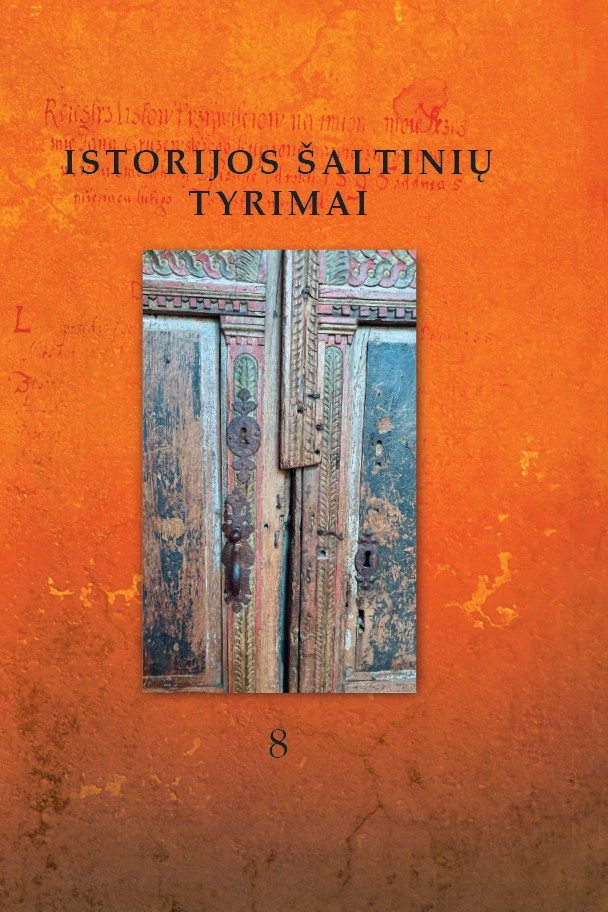Volume 8, Issue 1 (2024): Istorijos šaltinių tyrimai, October 2024

Order by:
Pub. online: 15 Feb 2025
Type: Article
 Open Access
Open Access
Abstract
Pub. online: 15 Feb 2025
Type: Article
 Open Access
Open Access
Abstract
Pub. online: 15 Feb 2025
Type: Article
 Open Access
Open Access
Journal:
Istorijos šaltinių tyrimai
Volume 8, Issue 1 (2024): Istorijos šaltinių tyrimai, pp. 99–114
Abstract
Pub. online: 15 Feb 2025
Type: Article
 Open Access
Open Access
Journal:
Istorijos šaltinių tyrimai
Volume 8, Issue 1 (2024): Istorijos šaltinių tyrimai, pp. 115–156
Abstract
Pub. online: 15 Feb 2025
Type: Article
 Open Access
Open Access
Journal:
Istorijos šaltinių tyrimai
Volume 8, Issue 1 (2024): Istorijos šaltinių tyrimai, pp. 157–196
Abstract
Pub. online: 15 Feb 2025
Type: Article
 Open Access
Open Access
Journal:
Istorijos šaltinių tyrimai
Volume 8, Issue 1 (2024): Istorijos šaltinių tyrimai, pp. 197–224
Abstract
Pub. online: 15 Feb 2025
Type: Article
 Open Access
Open Access
Journal:
Istorijos šaltinių tyrimai
Volume 8, Issue 1 (2024): Istorijos šaltinių tyrimai, pp. 225–252
Abstract
Pub. online: 15 Feb 2025
Type: Article
 Open Access
Open Access
Journal:
Istorijos šaltinių tyrimai
Volume 8, Issue 1 (2024): Istorijos šaltinių tyrimai, pp. 253–288
Pub. online: 15 Feb 2025
Type: Disscusion
 Open Access
Open Access
Journal:
Istorijos šaltinių tyrimai
Volume 8, Issue 1 (2024): Istorijos šaltinių tyrimai, pp. 289–300
Pub. online: 15 Feb 2025
Type: Review
 Open Access
Open Access
Journal:
Istorijos šaltinių tyrimai
Volume 8, Issue 1 (2024): Istorijos šaltinių tyrimai, pp. 301–304